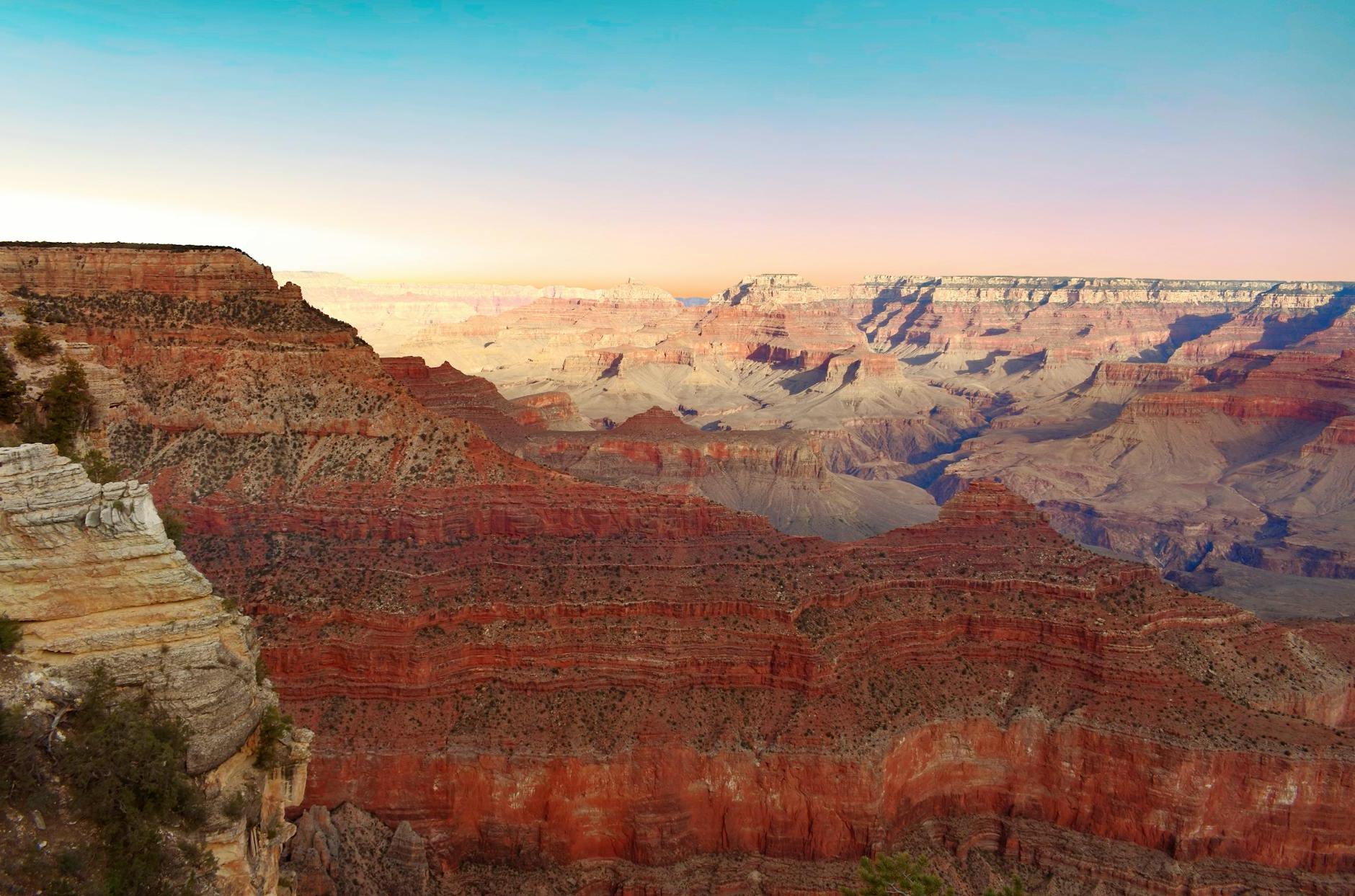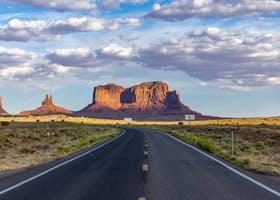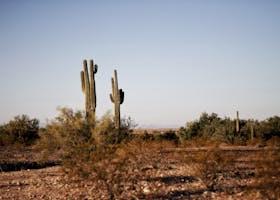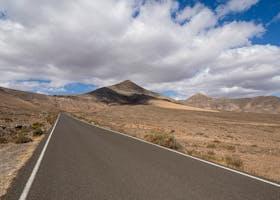10 Must-Visit Spots in Grand Canyon National Park, Arizona
Posted on June 4, 2024 • 10 minutes • 1926 words
Table of contents
- 10 best things to see in Grand Canyon National Park
-
Frequently Asked Questions
- 1. What is the best time of the year to visit Grand Canyon National Park?
- 2. Should I rent a car in Grand Canyon National Park?
- 3. What are different ways to get to Grand Canyon National Park?
- 4. Are there things to do with children in Grand Canyon National Park?
- 5. Is Grand Canyon National Park safe to travel to?
Welcome to one of the most stunning natural wonders in the world—Grand Canyon National Park in Arizona! A place of breathtaking beauty, this park attracts millions of visitors each year, especially during the summer and spring months when the weather is perfect for exploring. But don’t worry, there’s something to do here all year round! Whether you’re interested in hiking, sightseeing, or simply soaking in the majestic views, the Grand Canyon has it all. In this article, we’ll take you through the top 10 must-visit spots in this incredible park, ensuring you make the most of your trip. So, grab your hiking boots and let’s get started on an unforgettable adventure!
10 best things to see in Grand Canyon National Park
10. Havasu Falls
Havasu Falls is a must-visit spot when you’re at Grand Canyon National Park because of its stunning turquoise waters and breathtaking scenery. To get there, you’ll need to be ready for a bit of an adventure. First, you’ll drive to the Hualapai Hilltop, the starting point of the hike. From there, it’s a roughly 10-mile trek to the falls, making it a perfect destination for hiking enthusiasts. Do note that you’ll need a permit to visit, and these can sell out fast, so plan ahead. Also, pack plenty of water and be prepared for changing weather conditions. Your effort will be well rewarded with the sight of one of nature’s most beautiful waterfalls.
9. North Kaibab Trail
You should visit the North Kaibab Trail at Grand Canyon National Park for an unforgettable hiking experience. This trail offers stunning views of the canyon’s unique rock formations and diverse landscapes, making it a favorite among adventure seekers. To get there, you’ll start at the North Rim, which is less crowded than the South Rim and provides a more peaceful setting. You can drive to the trailhead, located near the North Rim Visitor Center. Remember to pay attention to the weather, as conditions can change quickly. Also, carry plenty of water and snacks, wear sturdy shoes, and start your hike early to avoid the midday heat.
8. Mather Point
When visiting Grand Canyon National Park, you absolutely shouldn’t miss Mather Point. This spot offers breathtaking views of the canyon’s vast, colorful landscape, making it a perfect place for photos and memories. To get there, simply park at the Grand Canyon Visitor Center and take a short walk along the paved pathway leading to Mather Point. As you walk, keep an eye out for the informational signs that tell you more about the park’s history and geology. Once you’re at Mather Point, be cautious near the edge and stay on the marked pathways, especially if you’re visiting with children. The views are fantastic at any time of day, but sunrise and sunset are particularly magical. Enjoy the awe-inspiring beauty of one of nature’s greatest wonders!
7. Bright Angel Trail
One must-visit spot in Grand Canyon National Park is the Bright Angel Trail. Known for its stunning views and rich history, hiking this trail lets you experience the canyon’s beauty up close. Getting there is easy: start at the trailhead located near the Bright Angel Lodge on the South Rim. As you descend, you’ll be treated to amazing vistas, varied rock formations, and even some wildlife. However, be prepared for a steep hike and make sure to carry plenty of water, especially in the hot months. Also, watch your pace; the way back up is much harder than the descent! With good preparation, hiking the Bright Angel Trail can be the highlight of your Grand Canyon adventure.
6. South Kaibab Trail
If you’re visiting Grand Canyon National Park, you shouldn’t miss the South Kaibab Trail. This trail offers some of the most stunning views of the canyon, with breathtaking scenery at every turn. To get there, take the park’s free shuttle bus to the South Kaibab Trailhead, which is located near Yaki Point. The trail is well-marked and easy to follow, but it’s important to be prepared. Remember to bring plenty of water, wear sturdy hiking boots, and start your hike early in the morning to avoid the midday heat. Be cautious of the steep drop-offs and narrow paths, and don’t forget your camera; the views are truly unforgettable!
5. Desert View Watchtower
Visiting the Desert View Watchtower at Grand Canyon National Park is a must because it offers one of the most spectacular panoramic views of the Grand Canyon and the Colorado River. The Watchtower itself is a historic building designed by architect Mary Colter in 1932, and it showcases beautiful murals and Native American artwork. To get there, drive along the East Rim Drive from the South Rim’s Grand Canyon Village; it’s about a 25-mile scenic drive. While you’re heading there, watch for parking signs and make sure to bring water and a camera. The area can get crowded, especially during peak seasons, so early morning visits might be more pleasant. Be sure to check the weather and wear comfortable walking shoes as there are trails nearby worth exploring.
4. Horseshoe Bend
When you visit Grand Canyon National Park, you shouldn’t miss Horseshoe Bend. It’s a breathtaking spot where the Colorado River curves beautifully in the shape of a horseshoe, creating stunning photo opportunities. To get there, drive to the town of Page, Arizona, which is about 5 miles from Horseshoe Bend. From the parking area, you’ll take a short and easy hike of about 1.5 miles round trip. Make sure to bring plenty of water and wear comfortable shoes, as the trail can be sandy and hot. Safety is key—stay behind the railings at the viewpoint to avoid the steep drop-offs. The best times to visit are early morning or late afternoon to avoid the crowds and catch the best light for photos.
3. Grandview Point
When you visit Grand Canyon National Park, make sure to stop by Grandview Point for breathtaking views that will leave you in awe. Located on the South Rim, Grandview Point offers some of the most stunning and expansive vistas of the canyon. Getting there is easy: drive about 12 miles east of the Grand Canyon Village along Desert View Drive (Route 64). Keep an eye out for signs that will guide you to the viewpoint. Once you arrive, be prepared for narrow trails and steep drop-offs, so be cautious and stay on designated paths. Bring a camera, water, and maybe even a picnic to fully enjoy the scenery. Grandview Point is less crowded than other spots, making it perfect for a quiet, reflective moment with nature.
2. Yavapai Point
When you visit Grand Canyon National Park, make sure to stop by Yavapai Point for an unforgettable experience. This popular viewpoint offers stunning panoramic views of the canyon, including some of its deepest and widest parts. To get there, you can take the park shuttle bus from the Visitor Center. Follow the signs, and you’ll find it easily. The path is well-marked and accessible. While you’re there, don’t miss the Yavapai Geology Museum, where you can learn about the canyon’s formation and history. Remember to bring your camera and stay hydrated, as the sun can be strong. Enjoy your visit!
1. Hopi Point
If you’re visiting the Grand Canyon National Park, make sure to stop by Hopi Point for some breathtaking views. Located along the South Rim, Hopi Point offers one of the most expansive vistas of the canyon, especially during sunrise and sunset when the light paints the canyon walls in stunning colors. To get there, you can take the park’s free shuttle bus on the Hermit Road route, which operates regularly. For those who prefer a bit of exercise, you can also hike along the Rim Trail to reach Hopi Point. Once there, keep an eye out for the Colorado River winding its way through the canyon and be sure to bring a camera for some memorable photos. Remember to stay behind railings and watch your step, as safety is key while enjoying these beautiful but steep views.
Frequently Asked Questions
1. What is the best time of the year to visit Grand Canyon National Park?
The best time of the year to visit Grand Canyon National Park is from March to May and from September to November. During these months, the weather is mild, making it perfect for hiking and sightseeing without the summer crowds. If you prefer fewer visitors and lower prices, consider visiting during the winter months, from December to February. While it can be colder and some areas might be snowy, you can enjoy a peaceful, budget-friendly experience. Just be sure to check ahead for any road closures.
2. Should I rent a car in Grand Canyon National Park?
Yes, renting a car in Grand Canyon National Park is a great idea. The roads in the park are good and well-maintained, making it easy to drive around and explore various viewpoints. Traffic can get busy during peak tourist seasons, but generally, it moves smoothly. Parking is available at most popular spots, though it can fill up quickly, especially during holidays and weekends. If you prefer not to drive, the park also offers shuttle buses that run frequently and make stops at key locations. Taxis and rideshares are less common but can be found in nearby towns. Consider your comfort and travel plans when deciding whether to rent a car or use public transport.
3. What are different ways to get to Grand Canyon National Park?
There are several ways to get to Grand Canyon National Park. If you prefer flying, the closest major airport is Phoenix Sky Harbor International Airport, about a 3.5-hour drive away. Another option is Flagstaff Pulliam Airport, which is around 1.5 hours from the park. For public transport, Amtrak trains stop in Flagstaff, and you can catch a bus from there to the Grand Canyon. There are also shuttle buses that run from nearby cities like Flagstaff and Williams. If you enjoy road trips, you can drive from major cities in Arizona. From Phoenix, take I-17 North to Flagstaff, then follow US-180 West to the park. Driving from Tucson? Head up I-10 West, then I-17 North to Flagstaff, and continue on US-180. No matter which way you choose, the trip to Grand Canyon National Park is an adventure in itself!
4. Are there things to do with children in Grand Canyon National Park?
Absolutely, Grand Canyon National Park has plenty of things to do with children! Start with the Junior Ranger Program, where kids can earn a badge by completing fun activities. There’s also the Visitor Centers which have interactive exhibits perfect for young minds. Don’t miss the family-friendly trails like the Rim Trail that offer easy walks with jaw-dropping views of the canyon. The Desert View Watchtower is another hit, providing panoramic views that will leave your kids in awe. Plus, there are educational ranger-led programs that make learning about nature exciting. It’s a perfect place for a family adventure!
5. Is Grand Canyon National Park safe to travel to?
Yes, Grand Canyon National Park is generally safe to travel to. The park is well-patrolled by park rangers, and they ensure that the area is secure for tourists. However, like any popular tourist destination, it is wise to take some precautions. Petty crimes like pickpocketing can happen, especially in crowded areas. To stay safe, keep your valuables out of sight, remain aware of your surroundings, and avoid leaving belongings unattended. Always follow park rules and guidelines, and you’ll have a fantastic and secure visit to this natural wonder.




